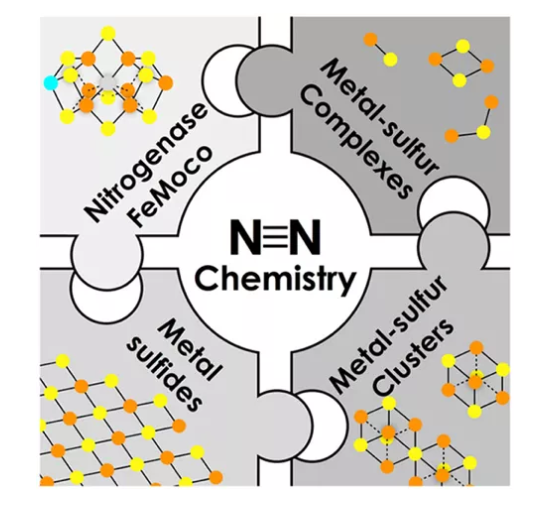Chem. Rev.: Metal sulfide biomimetic catalytic nitrogen fixation, or the blind touch the elephant?
QQ Academic Group: 1092348845
Detailed

Transition metal sulfides (M-S) can effectively convert N2 into NH3 in biological systems (biological N2 fixation), which benefits from the chemical evolution of the probiotic nitrogen fixation system.
In view of this, Yasuhiro Ohki of Nagoya University focused on synthetic species and reviewed the chemistry of M-S compounds related to N2 conversion and the structure/function of nitrogenase cofactors.

Highlights of this article
Key point 1. The researchers focused on three types of MS compounds: multi-nuclear MS clusters related to the structure or function of nitrogenase cofactors, and mononuclear species supported by sulfur-containing ligands in N2 and N2Hx (x=2, 4) chemistry And binuclear transition metal complexes and metal sulfide solid materials for reducing N2.
Point 2. Research on this type of compound shows that the understanding of N2 reduction and related substrate reduction is still limited. The researchers summarized a series of studies from atomic to mesoscopic scales and proposed potential means to clarify the role of metal atoms and sulfur atoms in biological fixation of N2, which may help the development of functional materials.


Kazuki Tanifuji, Yasuhiro Ohki, Metal--Sulfur Compounds in N2 Reduction and Nitrogenase-Related Chemistry, Chem. Rev., 2020
DOI: 10.1021/acs.chemrev.9b00544
https://doi.org/10.1021/acs.chemrev.9b00544
Article source: Catalytic Meter
This information comes from the Internet for academic exchange only. If there is any infringement, please contact us to delete it immediately.
- Previous: High-efficiency near-i
- Next: A Rising 2D Star: Nove


 Academic Frontier
Academic Frontier